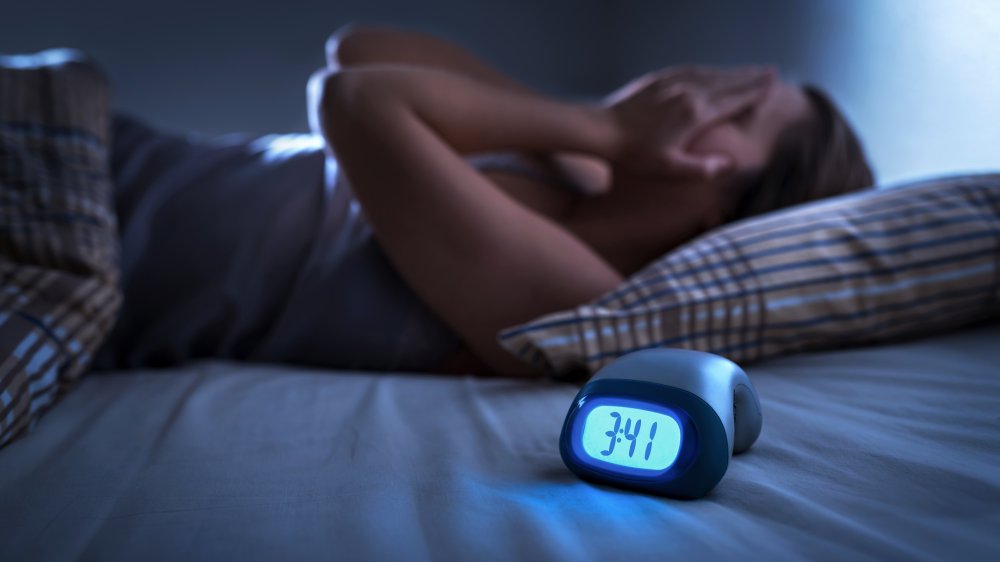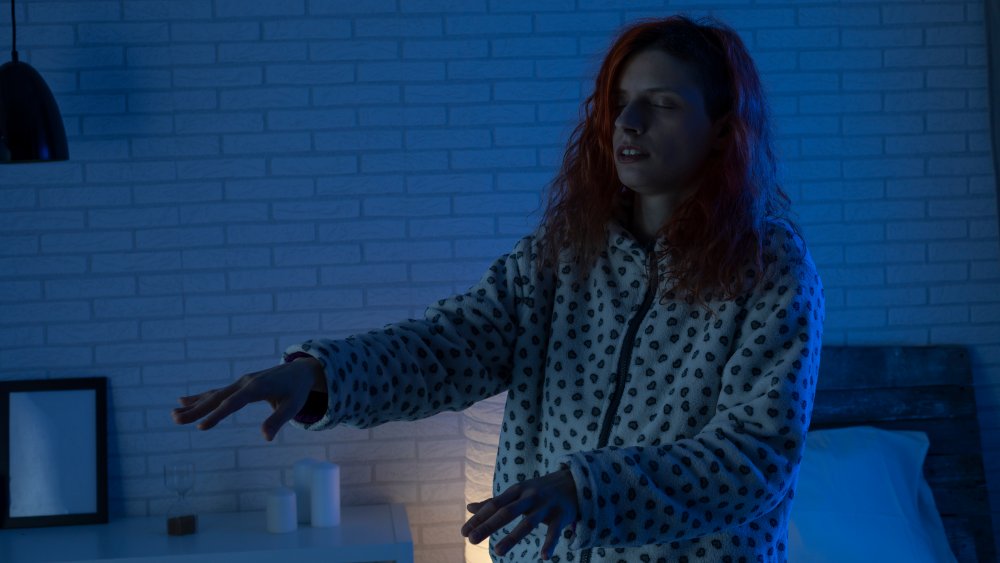Should You Wake A Sleepwalker? This Is What Happens When You Do
Sleepwalking is a relatively common phenomenon. According to the National Sleep Foundation, up to 40% of children sleepwalk. While most children grow out of the behavior, there are still millions of adults who sleepwalk and exhibit a variety of disconcerting behaviors. Sometimes, the sleepwalker will sit up and look around in confusion; other times, they can wander around the house, performing normal activities (via NHS.) They might even talk, though their answers might not make much sense. Occasionally, a sleepwalker might attempt a more complex and dangerous task, like driving a car (via Psychology Today.) If you see a loved one sleepwalking, should you wake them up? It can be a bad idea 一 though not for the reasons you might think.
Sleepwalkers may become agitated if you wake them
According to the Mayo Clinic, it can be very disruptive to wake sleepwalkers, as they might become confused or agitated when pulled from sleep. Even worse, some sleepwalkers may become violent and attempt to attack the person waking them up, per the National Sleep Foundation. Instead, gently guide the sleepwalker back to bed by turning them in the right direction. Walk alongside them, making sure they get to bed safely, touching them as little as possible to prevent waking them. Chances are, in the morning, they'll have no memory of their nighttime rambling.
Sometimes, though, waking a sleepwalker can't be avoided. Sleepwalking can be dangerous, especially if the sleepwalker wanders outside. If you can't direct a sleepwalker back to bed, Sleep.org suggests moving to a safe distance and making loud noises to startle them awake. This will prevent the confused sleepwalker from hurting you. Once they wake up, gently explain that they've been sleepwalking and get them back to bed.
How to prevent sleepwalkers from hurting themselves
Even though there's no definitive treatment for sleepwalking, there are still measures you can take to try and prevent it from happening, which include following good sleep hygiene. The National Sleep Foundation recommends limiting daytime naps to 30 minutes, exercising, and establishing a regular bedtime routine. Your doctor might suggest other treatments, including hypnosis and medication (via Mayo Clinic.) Avoiding alcohol can also prevent the behavior (via NHS.) The Mayo Clinic recommends keeping a sleep diary to bring to a doctor, so they can help you identify behaviors that cause sleepwalking — and help ensure a more restful night.
If all those methods can't stop someone's sleepwalking, the Mayo Clinic suggests safety measures that can keep you and the sleepwalker safe. Sleeping on the ground floor can prevent sleepwalkers from heading for the stairs. Locking windows and bedroom doors keeps the sleepwalker from leaving and hurting themselves. Make sure cords and other tripping hazards near the bed are removed.
With these safety measures in place, you can make sure a sleepwalker ends up with nothing worse than a bad night's sleep.


